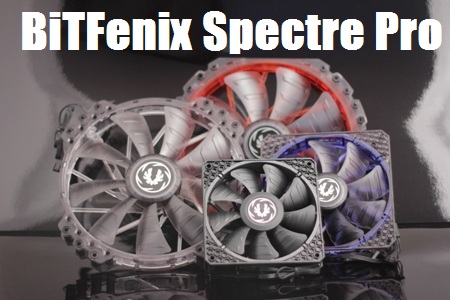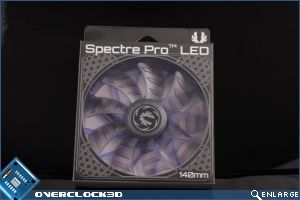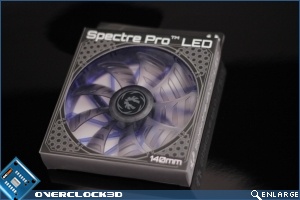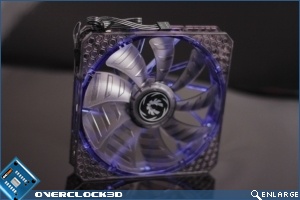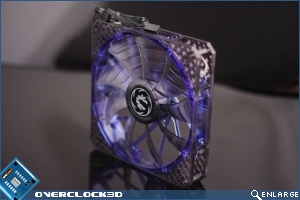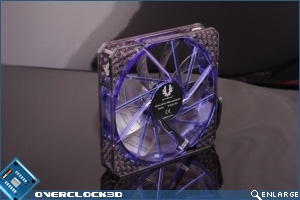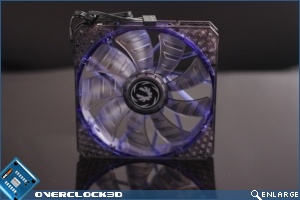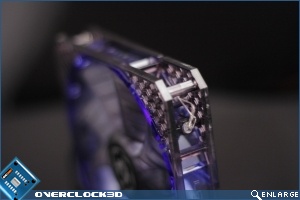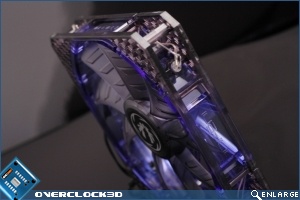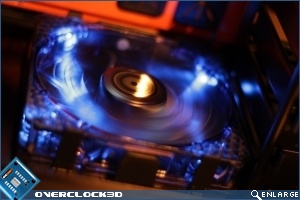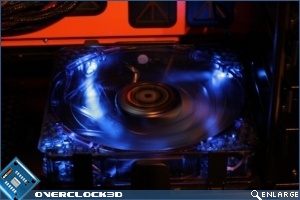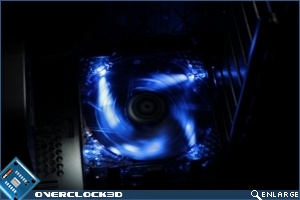BitFenix Spectre Pro Range Review
Â
Up Close:Â 140mm
| 140mm | Spectre Pro | Spectre |
| Price | £11.99 | £7.95 |
| Speed (RPM) | 1200 | 1000 |
| Airflow (CFM) | 86.73 | 47.7 |
| Static Pressure (mmH2O) | 1.38 | 0.6 |
| Noise (dB-A) | 22.8 |
Â
The 140mm model used in the review is the Blue LED version. Like all the other sizes it is also available in red and white LED as well as a non LED version.Â
The 140mm Spectre Pro shares the same split frame construction as the rest of the range, however with the coloured LED versions of the Pro the inner cowling is made not of a solid Matt Black but of a semitransparent plastic, which is coloured to tie in with the colour of the LED, in this case blue.
Â
The Pro’s outer cowling is again made of a semi transparent plastic, this time in smoked grey. The LEDs are located on the outer corners of the fans outer cowling. Technically the LED version of the fan can still be split as with the non LED version. However in doing so it will be necessary to either extract the LED, which are glued in, or more likely after 20 mins of trying in vain to pry one out, cut the wire leading to the LED. I guess if you were planning to change the colour and re paint then having to cut the wires to the LED is no biggy really.
Â
Installed and working the Spectre Pros LEDs illuminate the fan blades from the outside of the cowling. The semi transparent nature of the blades does diffuse the light to an extent, but as with all fans where the LEDs are on the outside pointing in the effect is more that of illuminating shafts of light on the blades, as well as giving a diffuse glow to the immediate area within the case. The top two images below are taken with the room ambient lighting on, and lower two images in total darkness.Â



